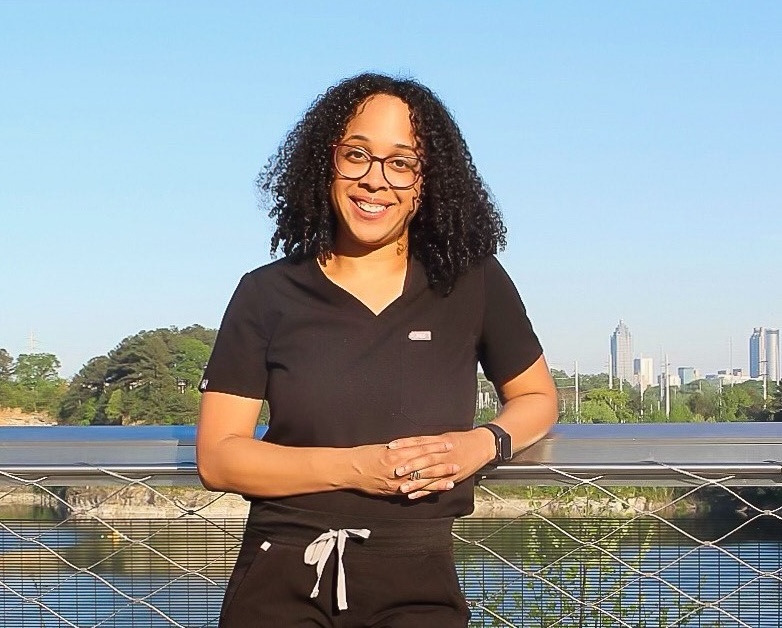Debora Grandison, a 63-year-old author in St. Louis, MO, first learned that she had issues with her heart in 1988 when she went into preterm labor. The labor stopped but the medications she needed caused complications, leading to a few weeks in intensive care where she was diagnosed with mitral valve prolapse and gestational diabetes.
Grandison’s blood glucose went back to normal after she delivered her son, but her heart palpitations continued. Three years later, Grandison went to her doctor because she thought she had the flu. It wasn’t the flu. Her blood glucose levels had spiked to dangerous levels, and she was later diagnosed with Type 1 diabetes. Unfortunately, her health issues continued.
After several years of seeking answers from several doctors for severe heart palpitations, shortness of breath, left arm pain and dizziness, Grandison was finally diagnosed with cardiomyopathy and she got a pacemaker. She learned later that she also had atrial fibrillation, which increases stroke risk. But what bothers Grandison, now a volunteer for Go Red For Women, an American Heart Association initiative, is that she was never told anything about heart disease risk when she was diagnosed with diabetes. “They told me about complications like blindness, amputations and kidney disease, but that was it,” she said.
Almost half of women in the U.S. don’t know that heart disease is the number one cause of death among women (it accounts for 1 in 5 deaths), yet more than 60 million have some sort of heart disease. The numbers get even higher if they have diabetes. Women with diabetes have a higher chance of having a heart attack when they’re younger, and they have a higher risk of dying from that heart attack.
Diabetes also increases a woman’s risk of having a stroke. The high levels of blood glucose can increase the fatty deposits that line the blood vessels, narrowing or blocking them. High levels of blood glucose are also associated with elevated or high levels of triglycerides (a type of fat) in your blood that are also associated with heart disease.
Common risk factors
So what is the connection between heart disease, diabetes and stroke? The answer lies in the risk factors and what damage each can do to your body.
Aside from a family history increasing your risk for heart disease, stroke or diabetes, there are other strong risk factors — called cardiometabolic risk factors — that these three diseases have in common. They include:
- Having high cholesterol levels
- Having high triglyceride levels
- Eating a poor diet
- Having overweight or obesity
- Not being physically active
- Smoking
Hypertension (high blood pressure) can also raise your risk of a stroke and heart disease.
Each condition can raise the risk of you having one of the other two. For instance, having diabetes raises your risk of heart disease. “Having Type 2 diabetes is akin to having had a heart attack,” said Icilma Fergus, M.D., a cardiologist and director of Cardiovascular Disparities at Mount Sinai Medical Center in New York. This means that the effect of diabetes does as much damage to your heart as a heart attack would.
But importantly, Fergus explained, there are risk factors that you can change because your lifestyle also plays a large role in leading to cardiometabolic risk factors. “For instance, what you eat, how much you eat and what is inside of what you eat. We’re starting to see people at 17, 18 and 19 years old developing Type 2 diabetes. The reason is that they’re eating a lot of calories and a lot of foods made with preservatives.”
Help yourself by knowing your numbers
Given that some risk factors for heart disease, diabetes and stroke are changeable, you can take steps to reduce your risk. “I think women know they should get a mammogram, and they should get a GYN evaluation, but they don’t know [about getting checked for] the heart,” Fergus said. “But it’s just as important. Heart issues are 80% preventable, so if you could manage these risk factors before you have an event, we could prevent or avoid these heart issues.”
Fergus recommended that once women enter their thirties, especially if they have a family history of heart disease or other risk factors, they should know their blood sugar levels (called A1C levels), cholesterol levels, blood pressure levels, as well as weight and waist circumference. Simply going into your gynecologist, who might be the primary doctor for many women, is a start, she explained. “They can check your blood pressure and do blood tests. Have them discuss your blood pressure and what your blood shows. Does it show an elevation in blood sugar? Does it show an elevation in cholesterol? Fergus said that if you don’t have a primary GYN and you’re concerned, you can go to an urgent care clinic and tell them that you’re not well. “Invariably, they’re going to check your blood pressure, and they can check your blood. Urgent care centers can refer you out to a specialist if you need one.”
Disparities among women and their health
Unfortunately, not all risk factors can be easily changed. For instance, where you live, your education level and your income can have an impact on your health. “These are called the social determinants of health,” Fergus said. Even your ethnicity and whether you have a disability can play a role. “If you fall into these categories, these are risk factors that have been well documented related to heart disease.”
Studies show that people who have lower income and lower education levels have higher rates of heart disease and lower rates of receiving timely treatment when they do have symptoms. “If you’re more educated, you’re more knowledgeable and you’re able to ask more questions,” Fergus said. “You might be able to figure out that something’s not right earlier on and be able to act on it. If you’re less educated, you may rely on what some other person is saying.”
If you live in a low-income area where fresh or affordable food is hard to get, called a food desert, this can have a strong effect on your health. Fewer healthy food options means you’re likely to eat more processed foods, full of calories, fat, sugar and salt. It can take more work to try to overcome some of these hurdles, but knowing about them can help you be more aware of aspects you can change.
What you can do right now to lower your risk
It may seem daunting when you think about the different things you might need to do to lower your risk of heart disease, diabetes and stroke. The National Institute of Diabetes and Digestive and Kidney Diseases suggests starting by managing the “ABCs.”
- A is to know and understand your A1C levels over the past three months. These will tell you what your blood sugar levels are and if you’re at risk for developing diabetes or if you have it.
- B is to know what your blood pressure is. For most people, a healthy blood pressure is below 120/80, but everyone is different, so ask your doctor what yours should be.
- C is for cholesterol. Ask your doctor what your cholesterol LDL (low-density lipoprotein) should be. This is the so-called “bad” cholesterol.
Another important measure is to keep your triglycerides in check. Triglycerides are a fatty substance that build up in your bloodstream, and when they’re too high, they increase your risk of heart disease and stroke.
If any of ABCs or your triglycerides levels are elevated (anything above 150 mg/dL), you might be able to bring them down with lifestyle changes: eating a healthy diet, getting more physical exercise and not smoking. If they don’t come down, you might need to take medications to help you manage your risk of cardiovascular disease and diabetes.
“There are simple steps that you could take to make yourself a healthy woman,” Fergus said. “So don’t despair. Don’t give up. You can handle this.”
This educational resource was created with support from Amarin.










![Healthy No-Bake Mint Chocolate Truffles [high protein + no added sugar]](https://healthyhelperkaila.com/wp-content/uploads/2024/08/IMG_1902-e1724891697681.png)







 English (US) ·
English (US) ·